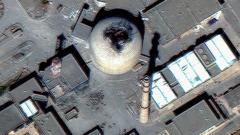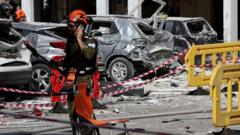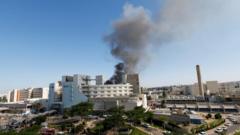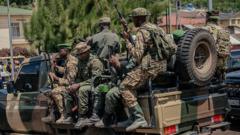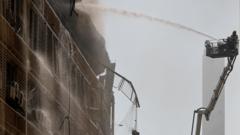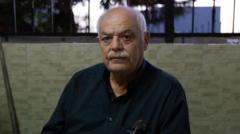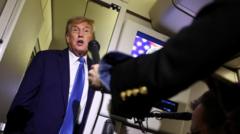With the escalating violence in Sudan, museums like the National Museum in Khartoum have suffered extensive damage, looting, and destruction of invaluable artefacts, highlighting a significant cultural crisis alongside the ongoing humanitarian catastrophe.
The Cultural Toll of War: Sudan's Museums in Ruins
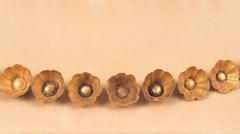
The Cultural Toll of War: Sudan's Museums in Ruins
The ongoing conflict in Sudan has ravaged the nation's cultural heritage, leaving museums and priceless artefacts devastated and looted.
The Sudan National Museum, once home to invaluable artefacts from ancient Nubian civilisations, has suffered immensely amidst the chaos of war that erupted two years ago. Previously a beacon of Sudan's rich heritage, the museum showcased stunning rams and lions statues, alongside exquisite Christian wall paintings. These treasures drew locals and tourists alike, serving as cultural touchstones celebrating a proud history.
However, as military forces wrest control in Khartoum from the rival Rapid Support Forces (RSF), the extent of devastation becomes painfully apparent. Government buildings are left charred, and Sudan's cultural heart, the National Museum, has not escaped the wreckage. According to Ikhlas Abdel Latif Ahmed, director of museums at Sudan's National Corporation for Antiquities and Museums, "They destroyed our identity, and our history."
The museum was in the process of rehabilitation when conflict broke out, making its artefacts more vulnerable to looting. Sudanese officials report that tens of thousands of pieces have been either destroyed or smuggled abroad, with RSF fighters suspected of trafficking these irreplaceable items to places like the United Arab Emirates (UAE). Although evidence is sparse, the UN has investigated the illicit export of gold by the RSF to the UAE since the onset of the war.
Ms. Ahmed recalls, "We had a strong room for the gold collection; they managed to open it and took all the gold." As a direct consequence, historic pieces, such as a gold collar from King Talakhamani's pyramid, are now unaccounted for. In addressing the worth of such artefacts, Ahmed summed up succinctly: “There is no value for the museum artefacts; it's more expensive than you could imagine.”
Recovery efforts underscore the harsh reality; the de facto government plans to contact Interpol and Unesco but faces daunting challenges. “The RSF's actions transcend mere criminality," criticized Amgad Farid of the Fikra for Studies and Development. He posits that these acts represent a systematic assault on Sudanese history, aiming to erase the narrative of Nubian, Coptic, and Islamic civilizations that span over 7,000 years.
As the RSF was forced out of Khartoum, the destruction unleashed on the National Museum reflects the broader plight of Sudan's people, many of whom have lost homes and loved ones. The UN estimates that nearly 13 million people have been displaced, with around 150,000 lives lost since the conflict began.
Amid this turmoil, Ahmed holds onto a glimmer of hope. Believing in the possibility of restoration, she and her colleagues aspire to rebuild the National Museum to be even more extraordinary than before. "Inshallah [God willing] we will get all our collections back," she said, embodying a resilient spirit amid deep cultural and humanitarian loss.

